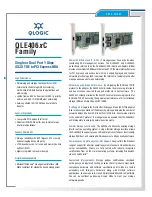
2
URS-02
low speed mode (1.5Mbps) and a high speed mode (12Mbps). When a USB
device is connected to a host, the device notifies the host which speed
should be used. Whenever a new USB device is added, the host sets a
schedule that determines at what interval data should be sent to which USB
device. All USB devices support Hot Swap feature that allows each device
to be added or removed while the PC is online. Not only that, all USB
devices support Plug and Play function that enables the devices without
rebooting the PC. Due to these two features, the user can quickly employ a
USB device anytime it is needed.
Each USB device is equipped with one or more downstream port(s) (Type B
connector) and one upstream port (Type A connector). Type A and Type B
connectors differ in shape, and are used to avoid connecting cables in a
wrong direction. To connect two USB devices, the downstream port on one
device needs to be connected to the upstream port on the other device via a
USB cable. A USB device may connect to any port as long as the connector
type matches. No loop is allowed in one bus tree, and a computer other than
the host PC may not be included in the tree.
USB devices operate from either an external AC power adapter ("Self
Power Mode") or from power supplied through the USB cable ("Bus Power
Mode"). USB devices with lower power consumption, such as mouse and
keyboard, may use the Bus Power Mode to directly draw its power from a
USB cable. Devices with Bus Power Mode support are further subdivided
into low power consumption devices (up to 100mA) and high power
consumption devices (100 to 500mA). Since no AC adapter is required,
devices with Bus Power Mode support are easy to setup. However, an AC
adapter may be required when USB devices with high power consumption
are in use. Please always check whether enough power is supplied to all of
the USB devices attached.
1
USB (Universal Serial Bus) is a general purpose serial interface designed to
connect a computer and low-to-middle speed devices. The standard was
developed by Microsoft, Intel, IBM, Compaq, DEC, Northern Telecom and
NEC, and was officially released in 1996.
USB connection scheme is of a tree structure with one host computer as its
starting point (root). Up to 127 devices may be connected via several USB
hubs. In one USB bus tree, USB hubs may be cascaded up to 5 levels (or 6
levels including the device at the end). The maximum distance between the
host computer and the device at the end is 30 meters, and up to 5 meters of
device-to-device distance is allowed. The USB standard supports both a
Chapter 1
Introduction
1
1
About USB
Summary of Contents for URS-02
Page 2: ......
Page 16: ...URS 02 21 ...


































